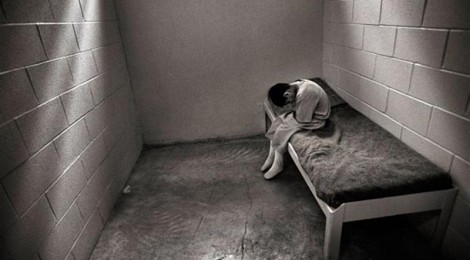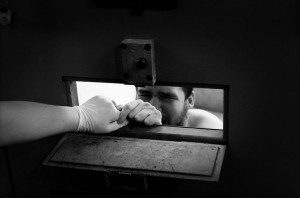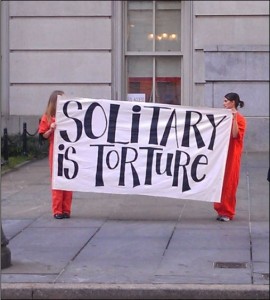
Rehabilitation Benefits Young Offenders More Than Solitary Confinement
“We are seeing far too many young offenders entering the adult system who should be dealt with in the juvenile system,” says public defender, Gordon Weekes, in a short documentary published in April 2014, by Human Rights Watch.
With little support and a lack of rehabilitation resources available in adult facilities, young offenders prosecuted as adults are often faced with harsh protective and disciplinary measures like solitary confinement.
But, solitary confinement is just as common in juvenile correctional facilities. In 2013, an Ohio juvenile correctional facility placed a young boy in solitary confinement where he spent 1,964 hours in isolation. Referred to as K.R. in court documents, his longest period of seclusion was 19 consecutive days.
Although declining, in the 1980s through the mid-1990s, serious and violent juvenile crimes were on the rise, raising concerns about whether to subject young offenders to longer prison sentences and the same legal proceedings as adults. In 2011, Human Rights Watch (HRW) and the American Civil Liberties Union estimated that more than 95,000 youth were held in prisons, most of these facilities using solitary confinement.
A 2012 HRW report states that solitary confinement is often used to punish young people for misbehavior, to isolate children if dangerous, to separate children vulnerable to abuse from others, and for medical reasons (including suicidal ideation).
Yet, research shows that solitary confinement can cause serious psychological and developmental harm to children, and can have a detrimental effect on one’s ability to rehabilitate.
In the HRW report, adolescents indicated a range of mental health difficulties during their time in solitary confinement. Thoughts of suicide and self-harm were common. Several participants even described that their requests for mental health care were not taken seriously.
Kyle B., a participant of the HRW study recalled:
“The loneliness made me depressed and the depression caused me to be angry, leading to a desire to displace the agony by hurting others. I felt an inner pain not of this world… I allowed the pain that was inflicted upon [me] from my isolation placement to build up. And at the first opportunity of release (whether I was being released from isolation or receiving a cell-mate) I erupted like a volcano.”
According to researchers at the 2014 Advancing Science Serving Society annual meeting, prisoners kept in isolation lose touch with reality, and can develop identity disorders after spending long hours without social interaction. It can also be damaging to individuals with pre-existing mental illnesses or past childhood trauma.
Incarcerated adolescents who have been accused or found guilty of crimes can be extremely difficult to work with. UN Special Rapporteur on torture, Juan E. Méndez, advises that “solitary confinement should be used only in very exceptional circumstances, for as short a time as possible.”
The US Supreme Court has consistently emphasized the importance of treating young people in the criminal justice system with special constitutional protections regarding punishment. Since solitary confinement is physically and mentally harmful to adolescents, many are calling for reform.
The HRW report suggests alternatives to solitary confinement to foster rehabilitation. They suggest increasing the number of trained supervised staff in facilities, like social workers and other mental health professionals. Providing adolescents with programs and activities in groups may help with development and rehabilitation. The HRW also emphasizes rewarding positive behaviours instead of punishing bad ones.
Research has also linked the role of education to improved behaviour and lower rates of delinquency among incarcerated youth.
Along with appropriate mental health care, education may improve rehabilitation efforts and assist youth in productive re-entry into their communities.
-Khadija Bint Misbah, Contributing Writer





